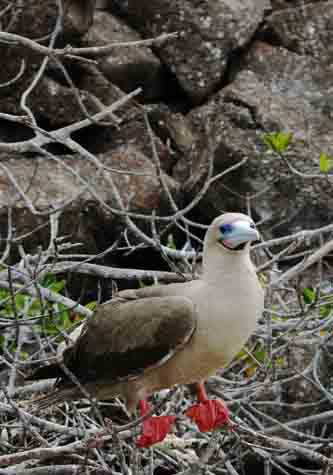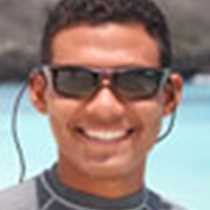Today, the National Geographic Islander navigated to a very remote island up north. We even had to cross the Equator to reach the island of Genovesa, whose name means “woman from Genova.”
Genovesa had once been a volcano, but after reaching maturity, it collapsed and formed a caldera. Water entered this hollow, creating Darwin Bay. Because of its location far from the other islands in the Galapagos, it is favored by a number of seabirds that prefer to breed on a place that offers access to the sea. It’s not surprising that Genovesa has the archipelago’s largest booby colony, which includes red-footed boobies, Nazca boobies, plus a few blue-footed.
Early in the morning before everybody woke up, some kayakers went to explore the shoreline of this unique island. Later on, after breakfast, we all landed at the beach where boobies, frigatebirds and other creatures awaited for us. The trail took us to the breeding area where we all enjoyed taking photos. On this day we also had the chance to go snorkeling next to the cliffs of the bay.
After lunch and a nap, we took a last hike. In terms of terrain, the visitor site of Prince Phillip’s Steps is slightly different from Darwin Bay. A long time ago, volcanic eruptions formed lava tunnels, where many storm petrels now nest. The short-eared owls on the island have become diurnal in order to hunt storm petrels during daylight. In the absence of hawks, the owls have become the top predator.
As wonderful as the trip has been, all things must come to an end, unfortunately. But the memories of this trip will stay with us forever.









